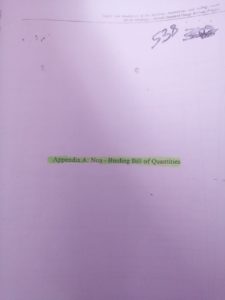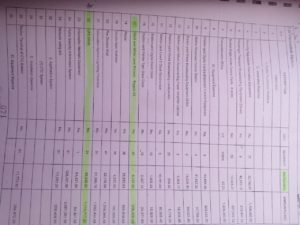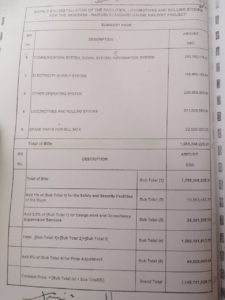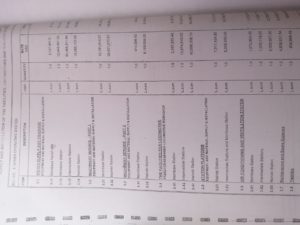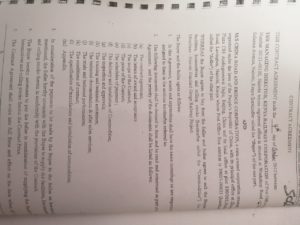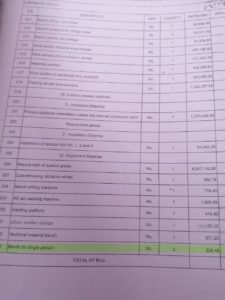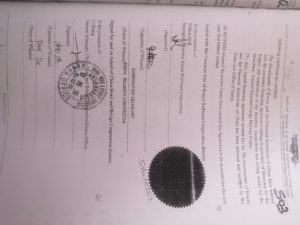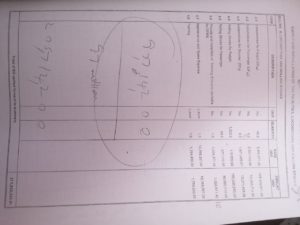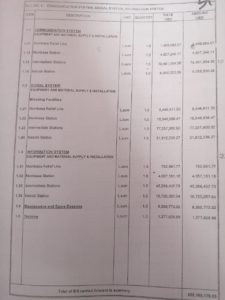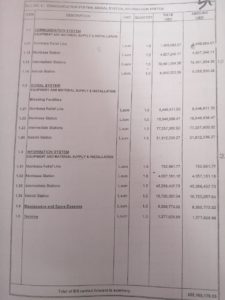Investigations
Greed on Steroids : SGR Contract Reveals More Theft and Plunder By Chinese
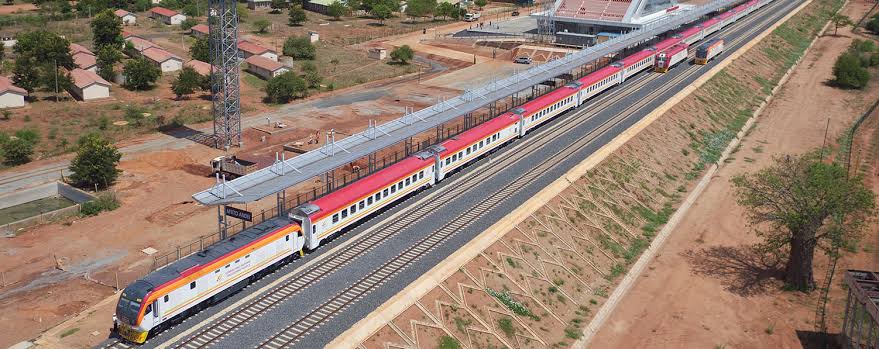
Standard Gauge Railways (SGR) project has been a bone of contention, a divisive subject among Kenyans. The problem is that, on one hand, you have intellectuals trying to tell Kenyans how this is a white elephant, something that was and still is a waste of money, on the other hand you have two groups, one group loves it that their journey to and from the coast of Kenya to Nairobi has been shortened to a few hours, the second group just don’t care about governance at all, they are here as passengers.
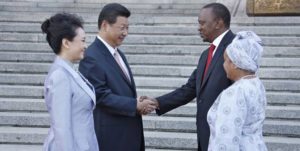
In February 2020, news broke that SGR landscape designers had used a whoping Sh1 billion on buying grass. Grass, that natural green vegetation that is first to grow in plenty when plantation burns or soil is shifted. How can it have possibly cost a billion shillings to plant it?
Well, the noise died down amid the danger posed by COVID-19, the pandemic and Kenyans moved on to the next topic. Well, not so fast.
At least, the original contract, a copy of it, had finally left its lock-and-key-thrown away into the sea cabinet. Kenyans, I mean journalists at the Nation Media Group had got hold of it and had analysed it, therefore confirming the intellectual’s narrative that SGR was overpriced, unnecessary and a cash cow.
It is common knowledge, from online sources and from articles by economists notably David Ndii(From Game Changer to Railway to Nowhere: The Rise and Fall of Lunatic Line 2.0) The Elephant – Speaking truth to power and others like the Ufungamano Group that the SGR project costs were inflated.
Ndii, a force critic of the SGR project has consistently termed it useless.
The Government of Kenya (GoK) and China Road and Bridges Corporation (CRBC) had pushed through with an unnecessary project which made no economic sense so as to grease the hands of leaders both in Kenya and China.
The intellectuals argued that the Metre Gauge Railway (MGR), which the Lunatic Express runs on should’ve been upgraded at a far cheaper cost.
What the SGR contract which has been seen by KenyaInsights says, the level of theft of Kenya money that had been loaned from China was unprecedented to say the least. The railways runs at a cost of Sh1 billion per month, which is unsustainable and losses are bound to accrue from its running. It is even better, ironically, to stop the trains than to run them.
During its planning and construction, the contract reveals that the managers were the greediest of all greedy of the earth. China which prides itself with tough stance against corruption had allowed its staff abroad to engage in blatant abuse, disrespect and theft of resources.
Apart from the sensational reports that we’ve seen in some quarters, and the manner in which some people still believe that anyone raising issues with costs surrounding infrastructure projects especially SGR are anti-government or hates the Kikuyu government to be exact. No it is not.
According to the contract, there are some information that was left out that was not covered by the mainstream media. The information reveals the level of theft of Kenya taxpayers money, the money was a loan taken in the name of Kenyan taxpayers signed by then Managing Director of Kenya Railways Nduva Muli.
Mr Li Qiang was the General Manager of CRBC and a representative of Chinese government in Kenya. The contract’s names is: Supply and Installation of The Facilities, Locomotives, and Rolling Stocks for the Mombasa – Nairobi Standard Gauge Railway Project.
3). The affiliate firm of China Road & Bridge called China Communication has now been awarded thro' single-sourcing the management of SGR.
— jacob juma (@kabetes) April 30, 2016
4). China Communication Co. will manage, operate and maintain Kenya's SGR with a guaranteed min. return that has been guaranteed by Treasury
— jacob juma (@kabetes) April 30, 2016
5). The Group GM of China Rd & Bridge E.Africa Mr. Li Qiang is the MOST CORRUPT Chinese on African soil.
— jacob juma (@kabetes) April 30, 2016
(Jacob Juma a once influential billionaire who broke ranks with his peers going on to expose their underworld dealings and would later be assassinated wrote in a memoir about the GM on his page “The Group GM of China Rd & Bridge E.Africa Mr. Li Qiang is the MOST CORRUPT Chinese on African soil.”)
6). Mr. Li Qiang is distributing tens of millions of dollars in cash and in various bank accounts all under the code name MK.
— jacob juma (@kabetes) April 30, 2016
7). Mr. Li Qiang should be charged with high treason and corruption even in China.
— jacob juma (@kabetes) April 30, 2016
The claims of inflated costs of the SGR project was in January 2020 supported (not that he didn’t also reveal it in the past) by the African Union High Representative for Infrastructure Hon. Raila Odinga in a local TV station. During the interview Raila said that he and former President Mwai Kibaki in the coalition government had tendered the SGR project at a lower cost, but when President Uhuru Kenyatta and his deputy William Ruto took over in April 2013, they cancelled the contract and re-tendered a fresh at inflated costs.
“Before we left government with Mwai Kibaki, we awarded SGR tender to a company at USD2.5billion. But when jubilee came in in 2013, they canceled the tender and awarded it back to the same company but at USD4.5billion. Obvious inflation of figures”, Raila Odinga, told NTV Journalist Joseph Warungu.
The contract showed people who were on a frenzy to get rich quick.
Inflating the costs
Perusing through the contract, it is not a mean fit, the document is big but one cannot escape the charade of Section 13 Appendix A: Non-Binding Bill of Quantities area. This is 44 pages of pure thuggery.
The looters of our country led by UhuRuto saw it fit to raise the prices of basic commodities to levels unpresented for example a mere bench cost Ksh180,000. The prices were quoted in United Stated Dollars (USD) and the conversion rate for this article will be USD 1 for Ksh100.
A battery forklift that costs about Ksh900,000 was bought at Ksh1.37 million.
Acetylene cylinder normally worth Ksh5,000 was purchased at Ksh38,040.
A good lighting arrester retailing for between Ksh500 and Ksh3000 was sold to Kenya at the price of Ksh11,680.
It is important to note that the prices given already have a mark-up and that the price quoted by the looters of Kenya, the difference is what they took home.
The level of theft that was carried out in this project makes the government and all those that benefited in the inflated costs term real news as fake.
KenyaInsights.com is aware that the Chairman of the Transport and Public Works Committee in Parliament who is also the Pokot South Member of National Assembly David Pkosing told Voice of America (VoA) news that the news about Kenya paying for grass along the SGR route at Ksh1 billion were rumors and fake news.
“Let them petition parliament and tell us this is inflated for this reason we known. They have no evidence. People when they don’t have evidence, they create rumors and peddle what I call fake news”, Pkosing said.
Though the Kenya government has not made public what they agreed with the Chinese government as pertains to the SGR Project, the contract also revealed as already reported that Digital voice recorders cost as little as Sh2,000 in Nairobi. These small costs here and there multiplied by the number of the gadgets being bought added up to billions of shillings.
CRBC also billed Kenyans Sh38 million to install a passenger guiding system, Sh14.6 million for each security system at the railway stations, Sh26 million for each luggage inspection system and Sh14 million for passenger monitoring systems at the stations.
The company also said it bought 46 A3 laser printers at Sh513,700 each for use at the stations during construction. The Nairobi station received five of these printers. These printers currently cost between Sh40,000 and Sh75,000.
Each of the intermediary stations also got a 30KW generator for use in case of power outage; Mombasa and Nairobi got two. The diesel generators, according to the contracts, were acquired at Sh4.26 million each. When the Nation asked around, we were told we could have one for Sh1.5 million.
Additionally, Kenyans paid Sh5.4 million for each of the 31 boreholes dug by CRBC in the intermediate stations. The Sh5.4 million is for drilling alone minus equipping and commissioning. The entire SGR from Mombasa to Nairobi has seven stations, which means each one was supposed to have three boreholes, a geological impossibility.
CRBC also said it needed to import six ZX7 DC/AC arc-welding machines as each station needed six of these for construction. These, according to CRBC, were bought at Sh442,872 each. We were able to get the same for Sh25,000 from Chinese manufacturers.
Initial plans fail and current suffering
The SGR was initially planned to run from the port of Mombasa in Kenya, through to Kisumu and into Uganda. The looters built it in phases, looting huge chunks of money and going for a new loan for the Nairobi – Naivasha line, which apart from paying in cash, they made sure Chinese officials have a bigger stock of Rhino Horns, elephant tusks, lion tooth and leopard hides by passing it through our National Park.
The sickness in this contract saw a bus that normally costs about Ks5 or Ksh6 million was purchased at 25 million. A van that cost Ksh2.4 million was bought at Ksh12 million. Mark you, the contract, in the first pages states that all imports were tax-free.
The Chinese staff, who are mostly derived from the scum of society, brought to Africa as punishmesnt lived lke Kings. According to the contract, over Ksh235 million was used for their entertainment. It is true that the chief engineer had at his disposal over Ksh5 million in telephone costs/ airtime.
If the cost of SGR from Mbsa to Nrb is $3.8b, why should the GK allocate $1.48b in a single yr yet the project is fully funded by Exim bank?
— jacob juma (@kabetes) February 18, 2016
Has the reality of the leaked contract been buried under a plethora of PR – Public Relations exercises? It is now curious that the mainstream media is not talking much about SGR’s shortcoming, the public debate ended after Coronavirus came into Kenya. However, before that, the same media stations accepted advertisement by Kenya Railways, the co-owners of SGR the next day after the expose’ on the sh1 billion grass. One headline the next day read: ‘Kenyans trained to take over SGR operations – official’.
The PR and the denial by the government doesn’t suppress that fact that Kenya borrowed more than Sh450 billion from China to build the 472-kilometer railway from Mombasa to Nairobi and and additional largely unused routes to Naivasha and Suswa.
The PR in the mainstream media is blind to the fact that many SGR workers in 2018 and 2019 came forward to reveal cases of abuse, racism and mistreatment working alongside or rather under Chinese.
In July 2018, a local media house revealed how Kenyan workers were suffering under the Chinese, mostly immigrant workers without documentation.
Another expose by a Kenyan blogger also exposed the issues of mistreatment at SGR. The staff among other things decried long unending trainings. These same trainings are what the SGR and KRC senior managers are using to appease the many unemployed Kenyan youths. It is a scam, that no one should fall for. Kenyans are very intelligent people and humble too.
Despite the many revelations of slavery at SGR, the Kenyan government’s position has always been “there’s a little misunderstanding”. The issues are swept under the carpet and staff deemed to be rogue are fired.
Job losses and environmental degradation
There’s no doubt that the economy of coastal city of Mombasa which depended on road transportation of cargo using tracks has suffered.
In their Environmental Social Impact Assessment (ESIA) study done by Kenyan form Africa Waste and Environment Management Centre (AWEMAC), SGR factors this but scoffs it off. It states: ‘most travelers that use road transport will also find it faster, convenient and safe to travel by train” and that ‘bus companies that operate between Nairobi and Mombasa will have to improve their services in order to compete with high quality train services offered”, it also takes a swipe at truckers saying that the over 50,000 drivers and turn boys might be adversely affected and as such ‘they may have to shift their business interests to the new railway in order to survive’.
The deeply flawed and lackluster AWEMAC ESIA report, some slightly over 200 people decided the fate of 2 million people living along the 385 Kilometre SGR line between Nairobi and Mombasa.
The study correctly notes that the train will produce exhaust gases which will settle on the vegetation and interfere with the photosynthesis. However, their solution is just to state that “the project will put up measure to ensure that there is reduction in emission of exhaust gases and smoke”.
What measures were put in place? None
Morocco easily built their train network, fully electrified (25kV 50Hz ac electrification), high speed (320km/h) at a cost of $1.5 Billion, compare to Kenya’s dirty diesel locomotive at over $4.8 Billion. It was a rip-off.
Will Kenya afford to pay?
Kenya loan repayment to China in the current financial year jumped from sh31 billion to sh71.4 billion. The over 130 per cent increase will be shouldered by the Kenyan taxpayer as SGR trains gobbling more than Sh1 billion per month in operational costs is making losses.
The repayments commence after the end of the 5-year grace period, as per the agreements made with Exim bank in May 2014. Kenya has 15 years to repay the SGR loan.
Repayments in the next financial year will increase to KSh84.3 billion, then later KSh111.4 billion in the financial year 2021/2022.
SGR remains a white elephant just like the many other than have left many engineers, govt officials rich, but the country poor.
Kenya Insights allows guest blogging, if you want to be published on Kenya’s most authoritative and accurate blog, have an expose, news TIPS, story angles, human interest stories, drop us an email on [email protected] or via Telegram
-
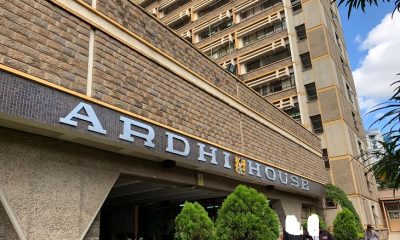
 Investigations2 weeks ago
Investigations2 weeks agoHow Land Grabbing Cartels Have Captured Ardhi House
-
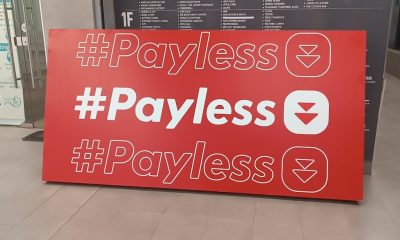
 Business1 week ago
Business1 week agoPanic As Payless Africa Freezes With Billions of Customers Cash After Costly Jambopay Blunder
-
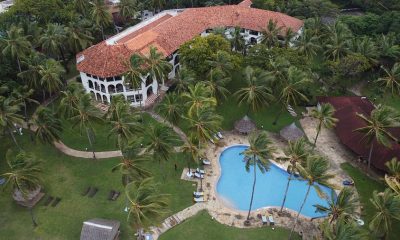
 News2 weeks ago
News2 weeks agoSCANDAL: Cocoa Luxury Resort Manager Returns to Post After Alleged Sh28 Million Bribe Clears Sexual Harassment and Racism Claims
-

 Africa2 weeks ago
Africa2 weeks agoPredators of South Sudan: Young “Guardians” Loot Billions
-
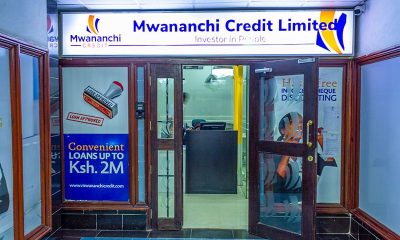
 Business2 weeks ago
Business2 weeks agoMwananchi Credit Faces Massive Lawsuits After Court Flags Predatory Lending That Left Customers’ Loans Ballooning
-
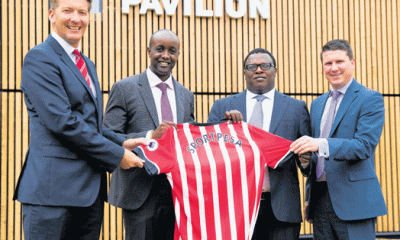
 Investigations7 days ago
Investigations7 days agoHow SportPesa Outfoxed Paul Ndung’u Of His Stakes With A Wrong Address Letter
-
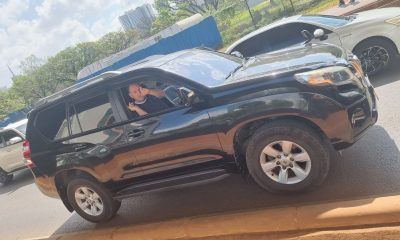
 News1 week ago
News1 week agoRentokil Boss Fraser Branch in Highway Smash as DUI and Racism Claims Surface
-
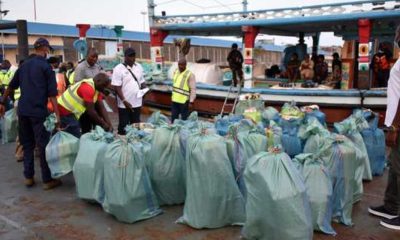
 Investigations2 weeks ago
Investigations2 weeks agoHow Arrest of a Soldier’s Spouse Dragged KDF Into Alleged Theft of Meth Haul in Mombasa

